(a Determine the electric field strength at a point 1.00 cm to the left of the middle Charge sh in the gure below. Enter the magnitude of the e ric eldon . 6.00 μC 1.50 μC -2.00 μC -3.00 cm 2.00 cm N/C (b) If a charge of-7.81 μc is placed at this point, what are the magnitude and direction of the force on it? magnitude 8 V-Select-- toward the right Need Hel toward the left downward
(a Determine the electric field strength at a point 1.00 cm to the left of the middle Charge sh in the gure below. Enter the magnitude of the e ric eldon . 6.00 μC 1.50 μC -2.00 μC -3.00 cm 2.00 cm N/C (b) If a charge of-7.81 μc is placed at this point, what are the magnitude and direction of the force on it? magnitude 8 V-Select-- toward the right Need Hel toward the left downward
College Physics
11th Edition
ISBN:9781305952300
Author:Raymond A. Serway, Chris Vuille
Publisher:Raymond A. Serway, Chris Vuille
Chapter1: Units, Trigonometry. And Vectors
Section: Chapter Questions
Problem 1CQ: Estimate the order of magnitude of the length, in meters, of each of the following; (a) a mouse, (b)...
Related questions
Question
A. Determine the electric field strength at a point 1.00 cm to the left of the middle charge shown in the figure below. (Enter the magnitude of the electric field only.)
B.If a charge of −7.81 µC is placed at this point, what are the magnitude and direction of the force on it?

Transcribed Image Text:(a Determine the electric field strength at a point 1.00 cm to the left of the middle Charge sh
in the gure below.
Enter the magnitude of the e ric eldon .
6.00 μC
1.50 μC
-2.00 μC
-3.00 cm
2.00 cm
N/C
(b) If a charge of-7.81 μc is placed at this point, what are the magnitude and direction of the force on it?
magnitude
8
V-Select--
toward the right
Need Hel toward the left
downward
Expert Solution
This question has been solved!
Explore an expertly crafted, step-by-step solution for a thorough understanding of key concepts.
This is a popular solution!
Trending now
This is a popular solution!
Step by step
Solved in 3 steps with 2 images

Knowledge Booster
Learn more about
Need a deep-dive on the concept behind this application? Look no further. Learn more about this topic, physics and related others by exploring similar questions and additional content below.Recommended textbooks for you
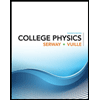
College Physics
Physics
ISBN:
9781305952300
Author:
Raymond A. Serway, Chris Vuille
Publisher:
Cengage Learning
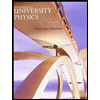
University Physics (14th Edition)
Physics
ISBN:
9780133969290
Author:
Hugh D. Young, Roger A. Freedman
Publisher:
PEARSON
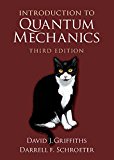
Introduction To Quantum Mechanics
Physics
ISBN:
9781107189638
Author:
Griffiths, David J., Schroeter, Darrell F.
Publisher:
Cambridge University Press

College Physics
Physics
ISBN:
9781305952300
Author:
Raymond A. Serway, Chris Vuille
Publisher:
Cengage Learning

University Physics (14th Edition)
Physics
ISBN:
9780133969290
Author:
Hugh D. Young, Roger A. Freedman
Publisher:
PEARSON

Introduction To Quantum Mechanics
Physics
ISBN:
9781107189638
Author:
Griffiths, David J., Schroeter, Darrell F.
Publisher:
Cambridge University Press
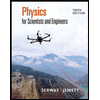
Physics for Scientists and Engineers
Physics
ISBN:
9781337553278
Author:
Raymond A. Serway, John W. Jewett
Publisher:
Cengage Learning
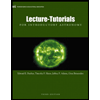
Lecture- Tutorials for Introductory Astronomy
Physics
ISBN:
9780321820464
Author:
Edward E. Prather, Tim P. Slater, Jeff P. Adams, Gina Brissenden
Publisher:
Addison-Wesley
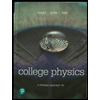
College Physics: A Strategic Approach (4th Editio…
Physics
ISBN:
9780134609034
Author:
Randall D. Knight (Professor Emeritus), Brian Jones, Stuart Field
Publisher:
PEARSON